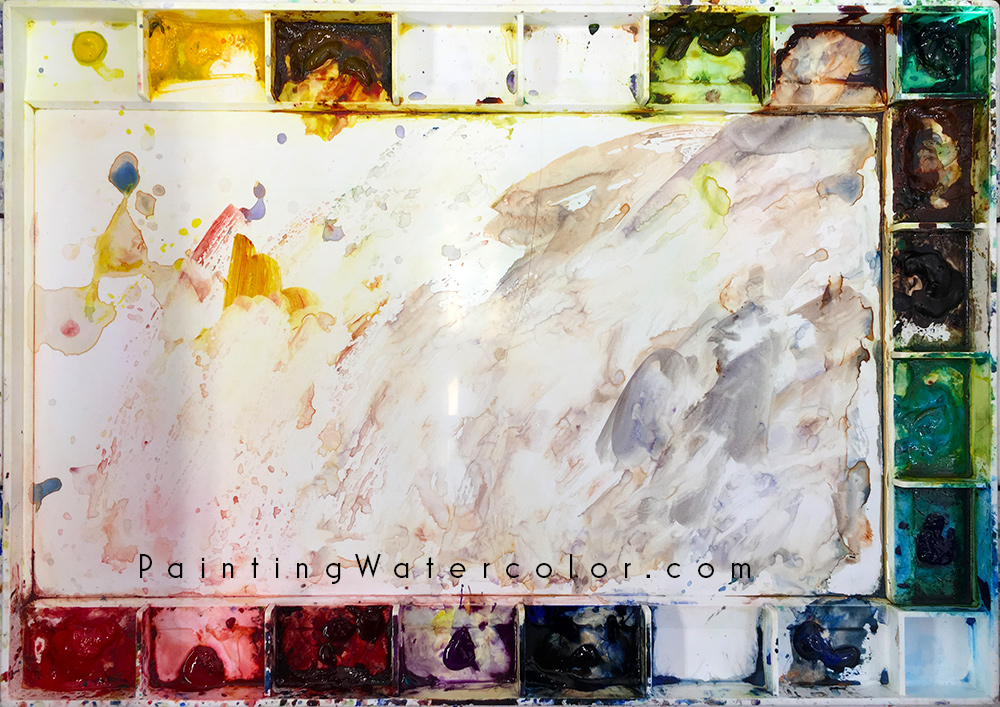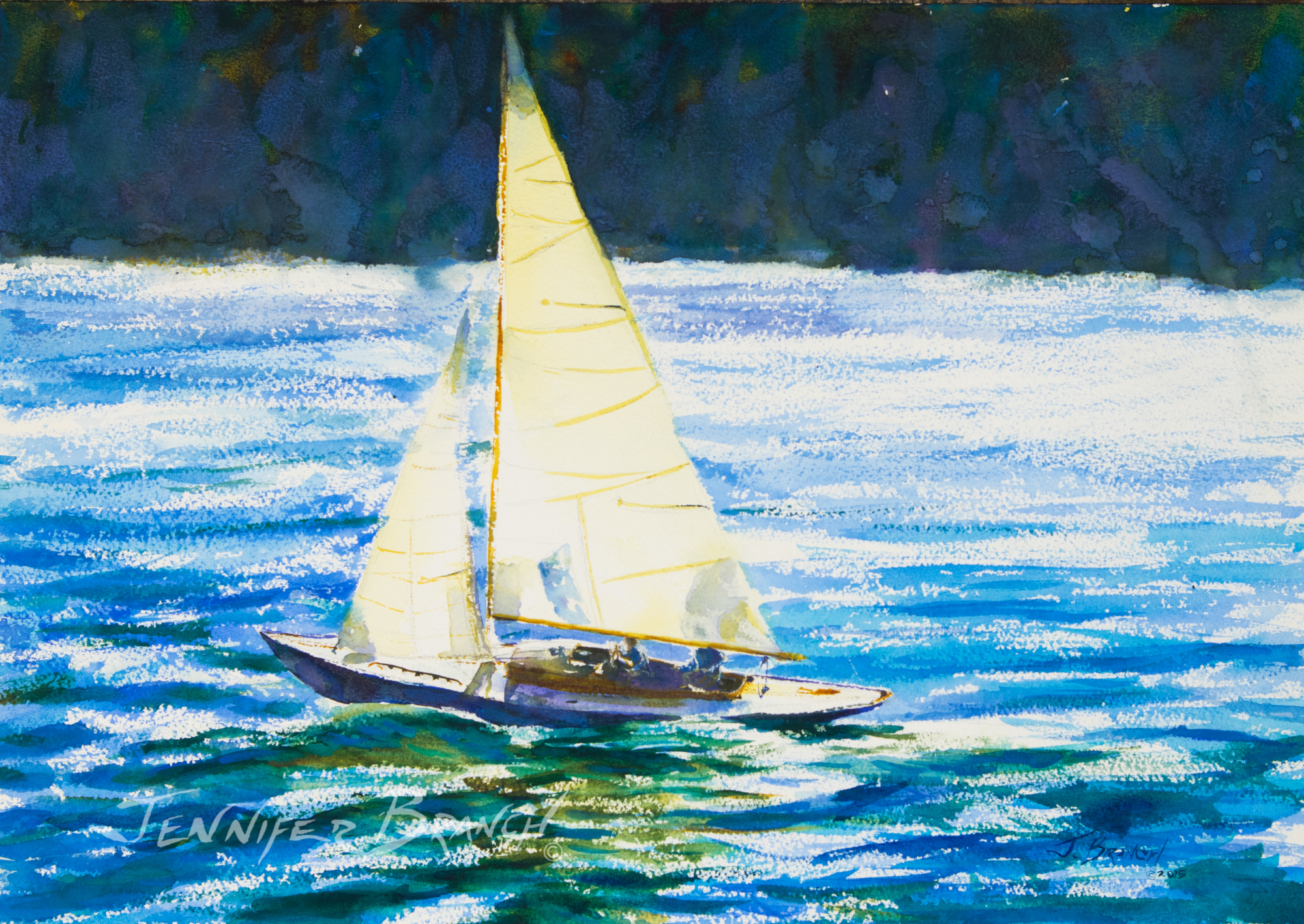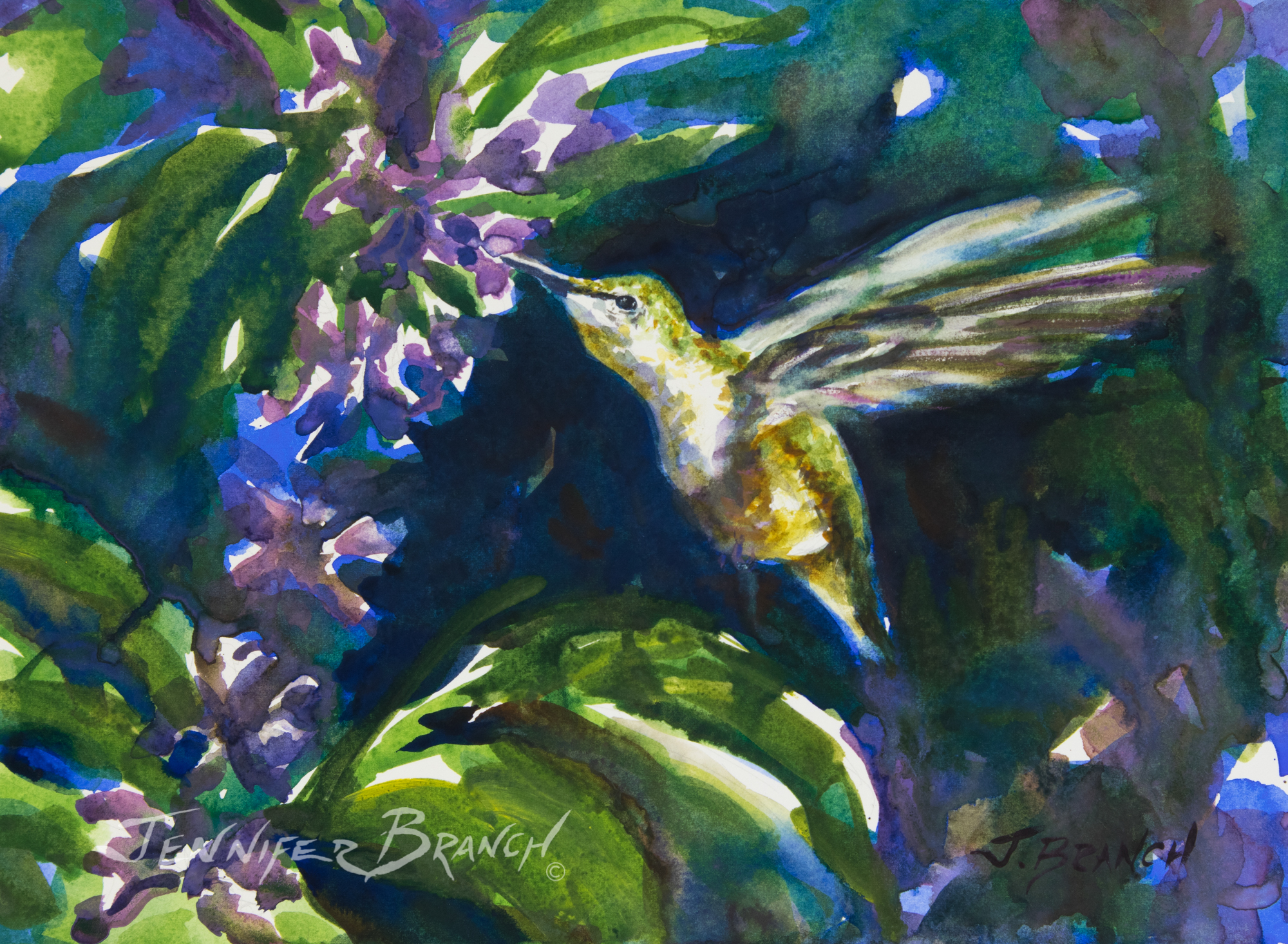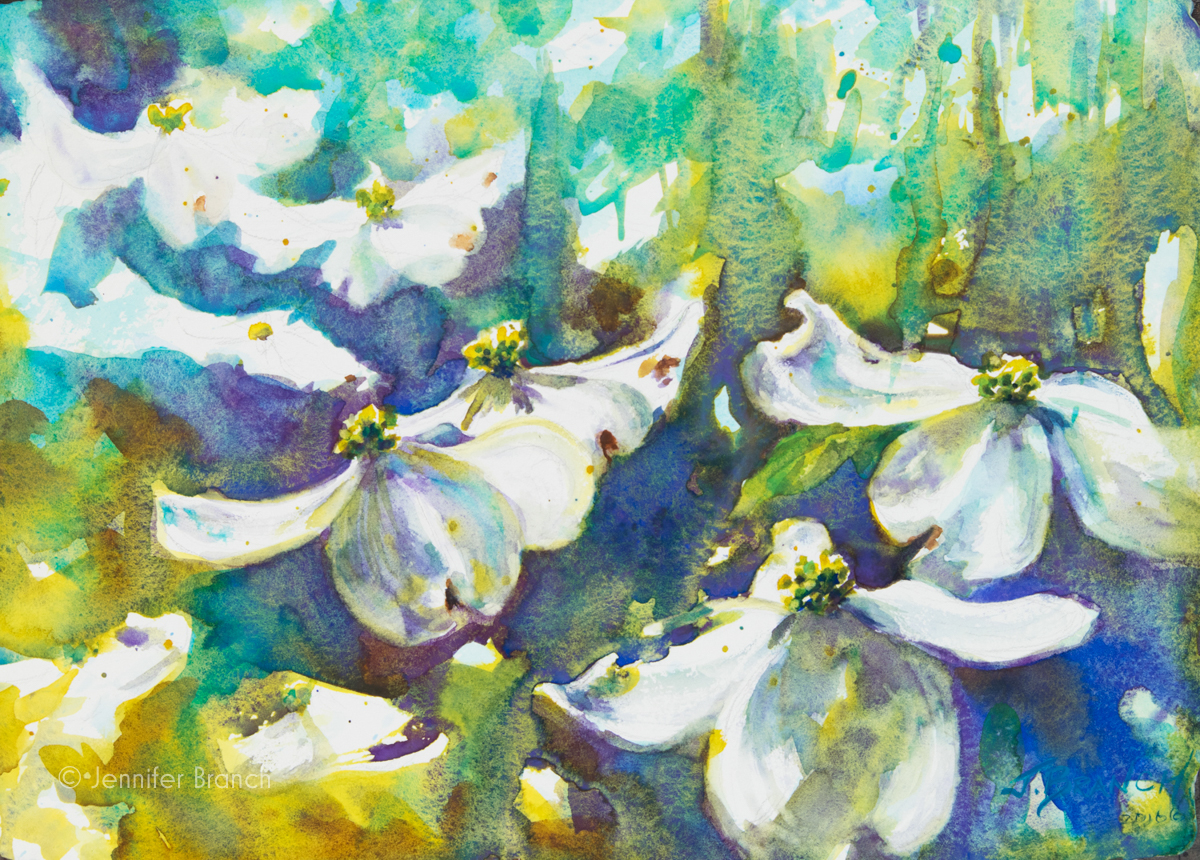Painting Demonstration 1
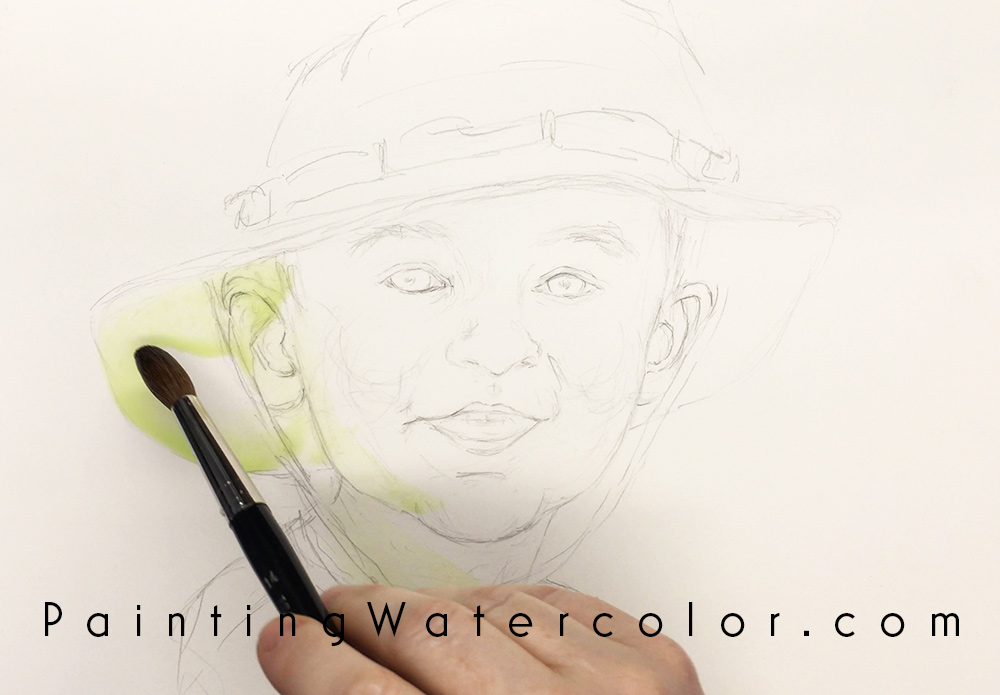
Begin with a loose wash in the shadow areas of a warmer cool color. Here I'm using Azo Yellow and Viridian.
This gives a luminous glow beneath the shadows.
You could use any warm transparent color here, or even a very pale cadmium red.
You can see my messy palette below!
Disclaimer: Jennifer Branch Gallery is a participant in the Amazon Services LLC Associates Program, an affiliate advertising program designed to provide a means for sites to earn advertising fees by advertising and linking to amazon.com. I receive a small rebate for your entire order (starting at 4%) if you choose to purchase through Amazon. Most items can be bought multiple places and I highly recommend local art stores if you have one! Any other recommendation links I receive no compensation for.
These referrals help me support this website, and I thank you for any purchase you make through them. I will never recommend a product I have not used frequently and believe is the best tool for the purpose!
Painting Demonstration 2
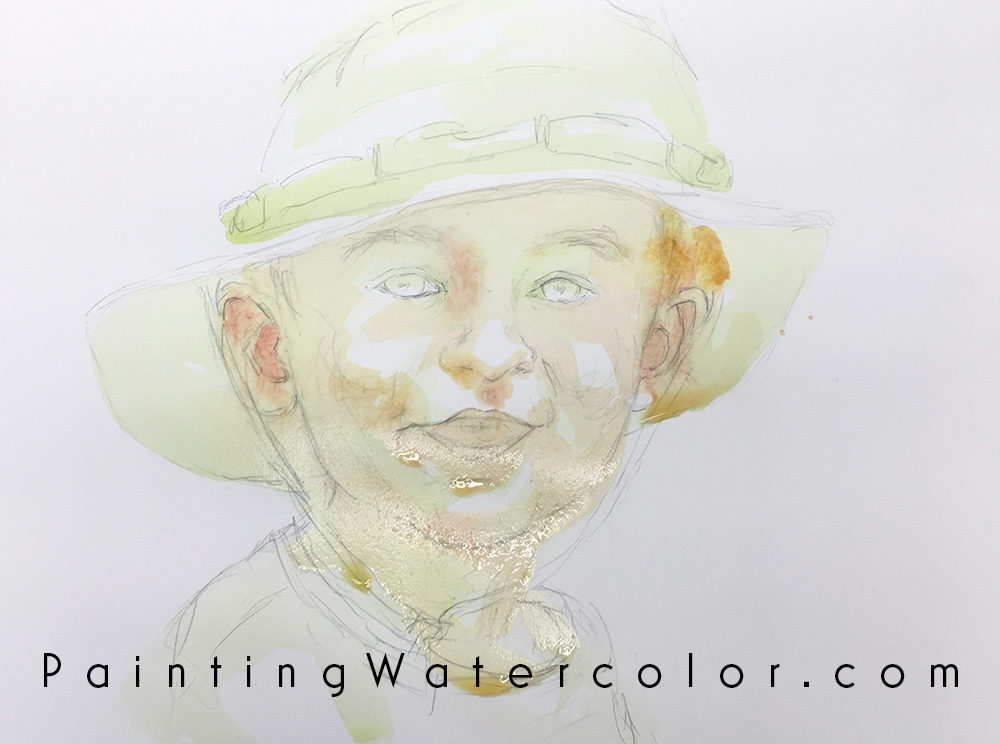
Into the shadows, loosely drop warmer skin tones, such as nickel azo yellow and cadmium red.
Painting Demonstration 3
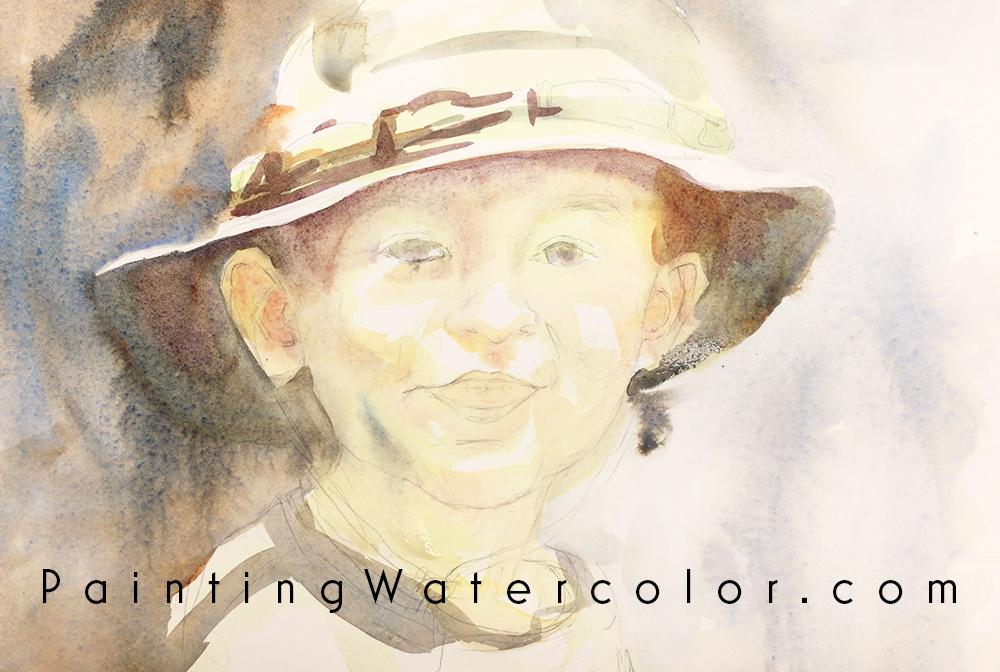
The background here is painted in mostly quinacridone rust and cobalt blue. I wanted the chalky color of cobalt blue. It's less harsh and less dark than an ultramarine blue or pthalo blue. A bit of a foggy effect.
Remember, while you probably want a few connecting lines in the background of a portrait, you don't have to have a solid background.
Artist Tips
Paint slowly in light layers. Every stroke counts!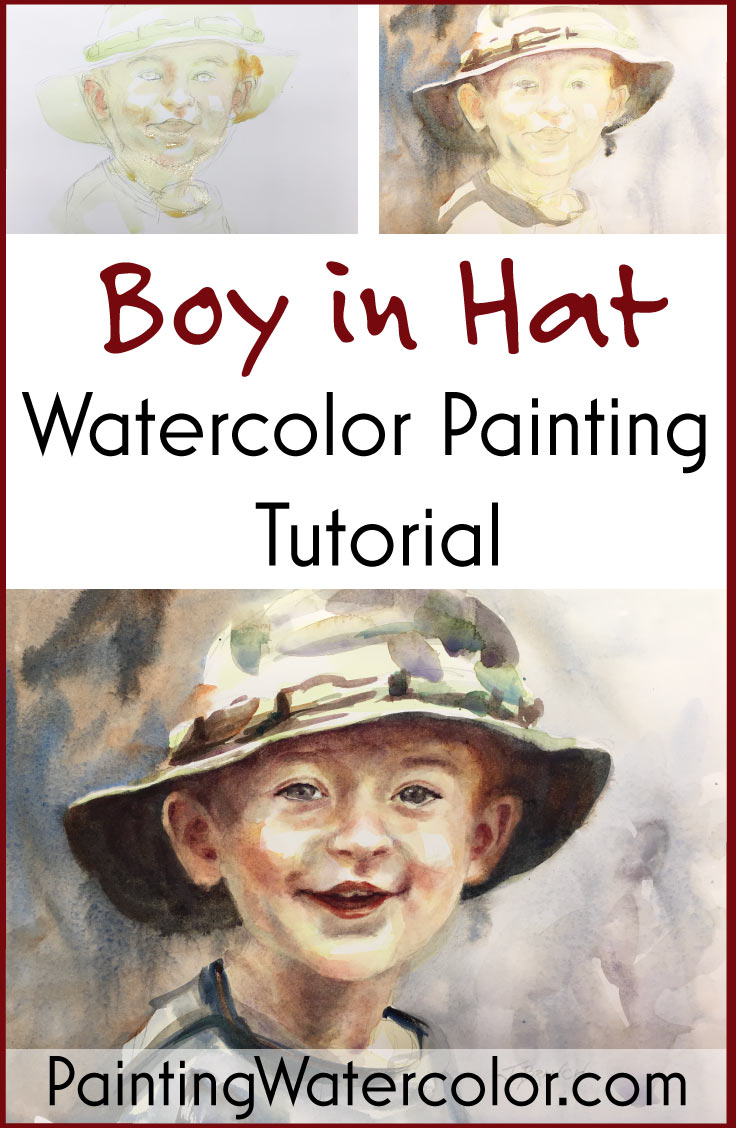
Painting Demonstration 4
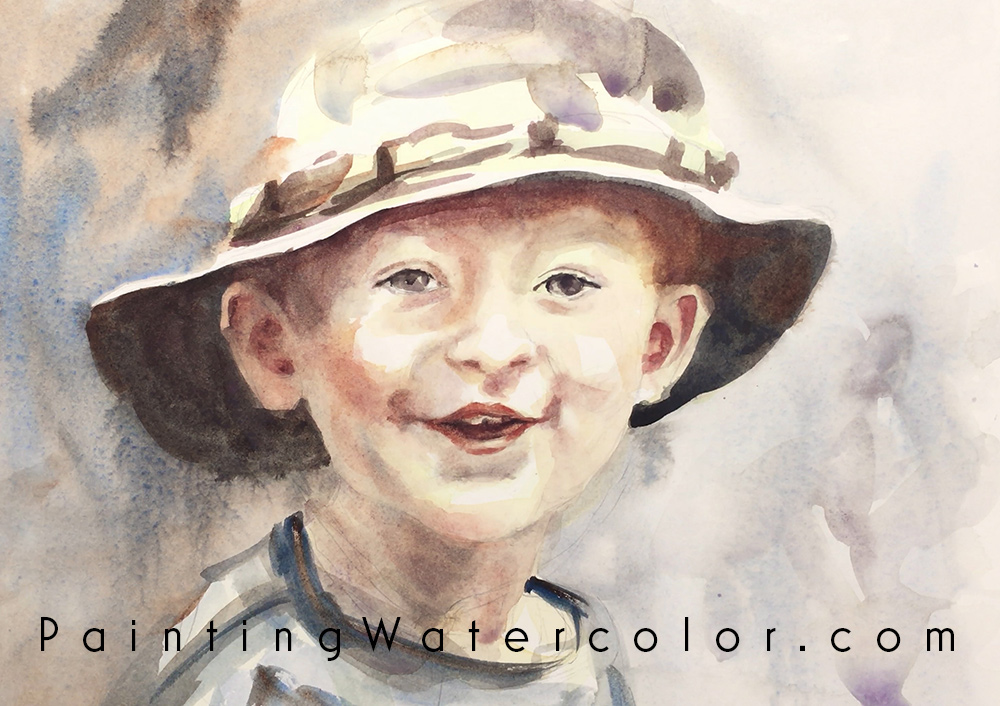
I'm keeping the strongest darks for the hat shadow and the features.
Painting Demonstration 5
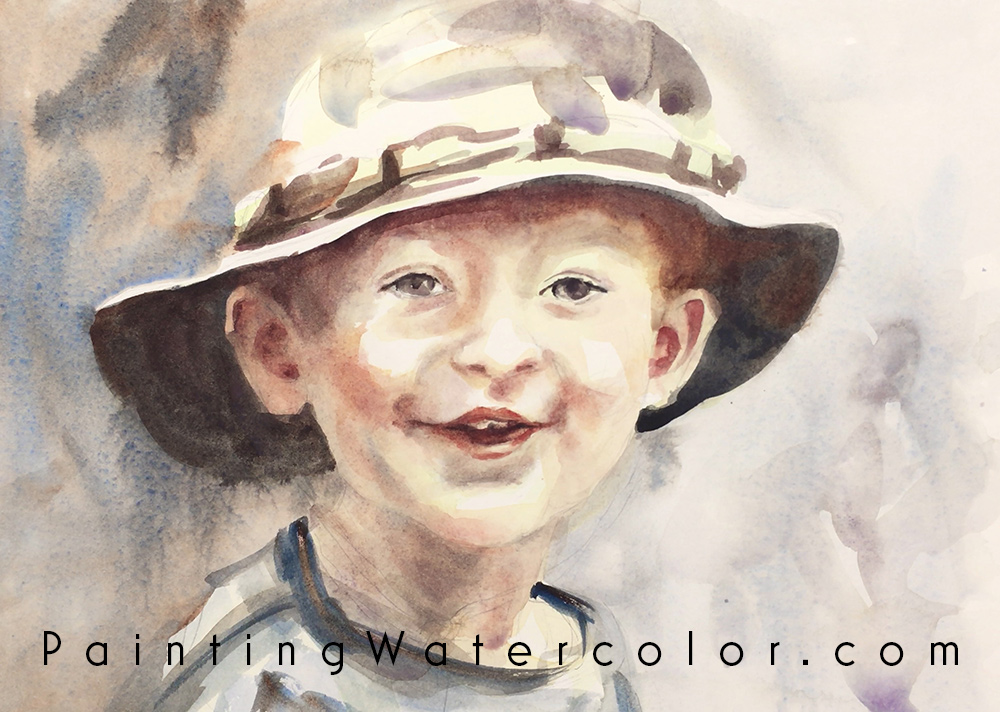
I'm starting to really mess with the mouth. Lots of little changes to shape it. I'm using a mix of quinacridone rust and cobalt violet for the mouth, with dashes of my other palette colors.
Painting Demonstration 6
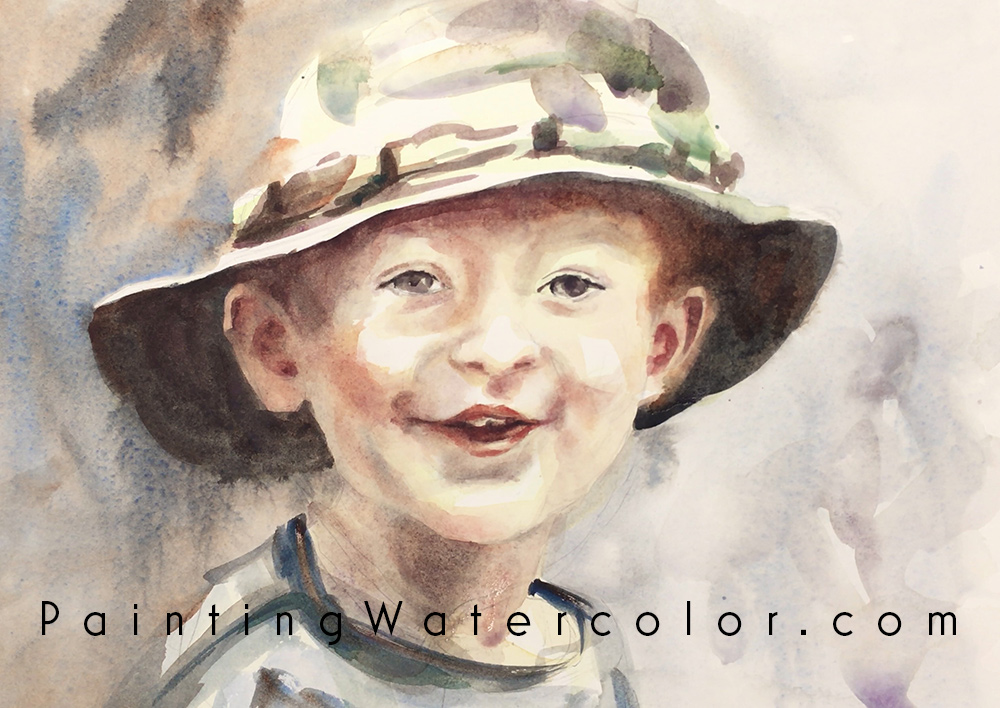
I tone down the ears and a few of the harshes lights.
Painting Demonstration 7
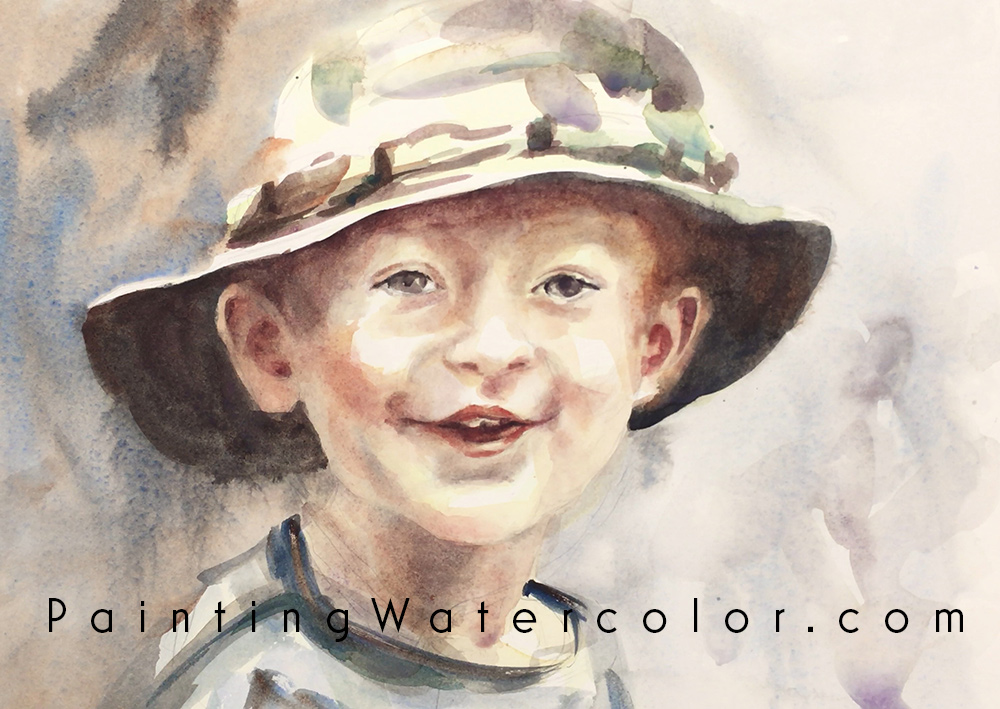
I'm modeling the eyes a bit, getting their socket shapes right. It's a gradual, subtle shadow for children. So lots of light layers.

Boy in Hat Portrait Final Watercolor Painting!
I did a lot of fussy work at the end. Many, many more light washes.
For the very finishing touch, I used a tiny bit of gouache for the glint in the eyes. I did not use gouache elsewhere, so if I had wanted to make this a transparent only watercolor, I could have scratched the paper or pulled it out. However, I only care what I use for the effect it gives. I think the opaque gouache is perfect for eyes' reflected light.
I'm really happy with this portrait. I've planned on painting this photo for years. I've even made it to the sketching stage several times before being distracted by something else. I'm glad I finally painted it. I love painting portraits of my boys.
The pigment mixtures on this portrait were complicated, but the actual palette was quite limited. Always a good idea with a portrait.
Portraits are very different from other subjects because each brush stroke is precisely placed. A wrong stroke in, say, a cheekbone, can lower or raise that bone an inch, or make it protrude or recede. Cheekbone height and sharpness make a huge difference in an individual's features. So do eye socket depth and nose shape. And theses are just fleshy parts, not distinct features.
A pine tree looks like a pine tree if the branch is a foot down or up. If you change a portrait that much (relatively speaking), it may be a portrait, but it's not the person you want to paint.
I'm not trying to say beginners shouldn't try portraits. Absolutely you should try painting anything and everything. However, for a portrait start with an accurate drawing. If you have that foundation, the portrait has a much greater chance of success.
And, by the way, don't forget most photos are lens distorted. If you can't draw from life, which I certainly can't get my kids to sit still long enough for either, then adjust for the inaccuracy of the photo.
I hope that covers a few of the easy mistakes you might make and I certainly have made! I want to inspire you to go paint a portrait this week and enjoy the process!


